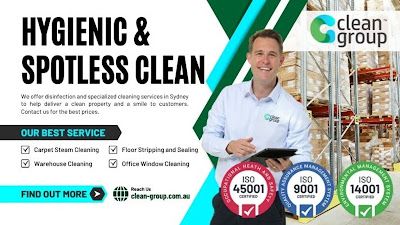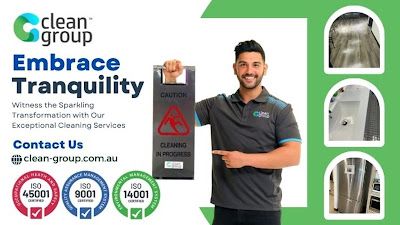
What services does Clean Group offer in Kings Cross, NSW?
How does Clean Group measure customer satisfaction?
As commercial spaces become more specialized, so too must the cleaning services that support them. Cleanroom environments, data centers, laboratories, and advanced manufacturing facilities require extremely precise cleaning standards. Companies operating in these sectors look for partners with specific certifications and technical expertise. Commercial cleaning companies that invest in niche capabilities can position themselves as premium service providers in high-value markets.
Commercial cleaning is also impacted by regional laws and labor standards, particularly concerning wage regulations, working hours, and employee rights. In many places, night shifts and weekend work are common in this industry due to the need to clean buildings outside of regular business hours. Companies must manage scheduling carefully to comply with labor laws and avoid overworking employees, which can lead to burnout or high turnover rates. As a family-owned business, Clean Group places a strong emphasis on building lasting relationships with clients. They treat every client like part of the family and go the extra mile to ensure satisfaction. Over the years, Clean Group has earned the trust of a wide range of clients, including leading brands across Kings Cross, NSW. Their dedication to customer service and commitment to high-quality cleaning has made them the go-to cleaning service provider for businesses in the area. Commercial Cleaning Kings Cross The reputation Clean Group has built over the years is a testament to its outstanding service. Many leading brands in Kings Cross trust Clean Group with their commercial cleaning needs. From small businesses to large corporations, Clean Group has demonstrated its ability to meet the cleaning demands of diverse industries. Their expertise in cleaning various commercial spaces ensures that every client receives tailored services that meet the unique requirements of their workplace.. In response, some firms are adopting more flexible staffing models and using software tools to streamline workforce management.
In educational settings, cleanliness is directly linked to student and staff well-being. Commercial cleaners are responsible for maintaining a wide range of facilities-from classrooms and cafeterias to libraries and dormitories. Regular disinfection and attention to high-touch surfaces help prevent illness and promote a culture of hygiene. These efforts are especially critical during flu seasons or disease outbreaks.

